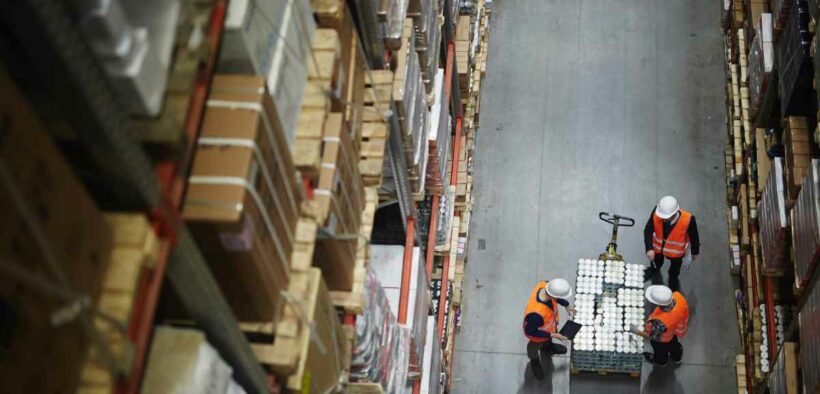Get strategic about managing your warehouse labour
Share

Daniel Kohut, Vice President ANZ at Blue Yonder, explains how managing your warehouse labour can unlock great potential to enhance your organisation’s overall performance.
E-commerce, risk and resiliency, technology and innovation, change management, and workforce shortages have impacted distribution operations over the past decade.
During this time, labour has been highlighted as a critical contributing resource to keeping the lights on to support the interruptions across the supply chain environment.
In addition, the COVID-19 pandemic has changed the working culture for the long term, which may be an overdue push towards greater flexibility and remote working, in addition to flexible working hours. Organisations are finding that they need to change the way they engage their workforce. Let’s review the challenges faced by warehouses and how companies can mitigate them.
Workforce demands are not predictable
Rarely do the daily events in a warehouse follow a consistent and predictable pattern. Trucks can arrive at any time of day and night and the volume, urgency, and variety of products demanded can also vary and change rapidly. These are the existing challenges.
Now the pandemic has compounded these challenges and added some more: Sickness-induced worker shortages, travel restrictions, and panic buying have strained the supply chain in almost every industry, significantly increasing the pressure on workforce planners.
To meet these challenges, warehouse managers need tools to ensure optimal worker performance. They must be able to measure the performance of individual workers and use this information to boost the overall performance and efficiency of the workforce. They need a labour management system.

The majority of retailers and manufacturers were affected by the availability of labour over the past 12 months; however, a substantial third were able to continue as normal (Blue Yonder State of the Supply Chain survey). In general, data centre (DC) operations have employed a wide range of labour strategies to retain talent and reduce turnover, the most common of which was the deployment of warehouse labour management with engineered standards.
Another standard method of tackling the labour challenge was in enabling flexible working hours. In addition, organisations are finding that improving their training and retention programs ensures that employees tend to stay with the organisation.
An alternate strategy being deployed is the implementation of automation at different scales throughout the business. Whether this is for jobs such as data entry, or in the warehouse through more significant deployment of warehouse robotics, investment in emerging solutions is one way to make up for a labour shortage and ensure that more attractive jobs are available to keep employees engaged.
Labour management systems needed
A labour management system measures and tracks the productivity of individual workers and provides this information to management. It helps supervisors and managers identify those employees performing at, or exceeding, the expected level of performance or those underperforming. Management can then consult with an underperforming employee to determine the cause and take appropriate remedial action.
A labour management system also dynamically determines the time each piece of work done in the warehouse should take and then reports at an individual level how well workers are performing against those benchmarks.
Labour management systems improved order picking by 65% on implementation and up to 95% after a few months. They’ve been shown to regularly generate labour cost savings of 10%-20% across a wide range of organisations, as well as total productivity improvements of 10%-20%, all while paying for themselves in less than a year.
Another major benefit of a labour management system is that it empowers supply chain leaders to offer incentives and rewards to top-performing teams and individuals. Managers can set realistic and achievable goals, making success and rewards feasible for all employees.
When employees are challenged with realistic goals, they remain engaged and productive. Companies that value and reward influential individuals are better able to retain staff and keep morale high. This, in turn, cuts down the time and expense associated with finding and training new workers.
Managing staffing levels
According to enVista, companies that have successfully implemented labour management systems have experienced productivity gains of 10 to 20%.
As a tool to help organisations combat the challenges of managing their workforce, the labour management system has a significant advantage: it can deliver benefits without warehouses acquiring further human resources simply by enabling them to use existing human resources more efficiently.
In summary, an effective labour management system can deliver:
- Improved workforce performance visibility.
- An accurate, objective view of productivity and accountability at both the employee and manager levels.
- A clear view of where and how waste can be eliminated.
- Continuous improvement by identifying and eliminating indirect time.
- Improved capacity planning including intra-day workforce balancing.
- Better labour scheduling.
- Insights and information that empower leaders to achieve peak performance.
- Enhanced employee engagement, communication, teamwork and employee retention.
- Improvements in ergonomics, safety, and quality due to improved execution of standard operating procedures and improved training in preferred operating procedures.
Know more about Blue Yonder, Scan the QR code.








